Don't Look Behind You Read online
Page 8
Nick divorced Lila May but she didn’t know that until she was given some papers the night before Nick’s trial, papers that said their divorce was final.
“When did you last see Nick?” Benson asked.
“Sometime back in the middle of the nineties. I didn’t have a car, so I was taking a bus and I saw him sitting in the back. I turned my head away and didn’t look at him.”
Lila May said that her ex-husband had also told Janet Blaisdell about murders he had committed, and Janet had urged her to get away from him. Without Janet, she probably wouldn’t have had the strength to leave Nick—and she felt grateful to Janet for having her back.
The two women had worked at the same places for a while, but over the years they had drifted apart.
Ben Benson was puzzled by the many versions that Nick Notaro had given when he decided to talk about the murder of his ex-wife Vickie. Was he trying to make it seem as though Vickie had been having an affair with Joe Tarricone? Or was he just making up details as he went along? Or was he a man who wanted to be the center of attention and told tall stories to achieve that?
One thing seemed certain; over a period of almost thirty years, Nick Notaro had admitted that he’d killed Vickie in every scenario he gave people.
Gypsy Tarricone told Ben Benson that she had talked to Renee on the phone a few times after her father disappeared, and Renee told her that she and her mother, Geri, felt that Joe had met with foul play. But they were emphatic in their denials that he had vanished from their rented house in Puyallup—even though Renee acknowledged that Joe had left his Mercedes, his pickup truck, and a camper at the house.
According to Renee and Geri, Joe had been in Alaska when he went missing. When Gypsy told Detective Jerry Burger of the Des Moines, Washington, police department that, he forwarded a copy of the information the missing man’s daughter gave him to Alaska State police trooper Roy Holland, and to the Anchorage Police Department.
In talking with Joe Tarricone’s family, Renee continually edited her recollections of the last few times she’d seen Joe. Whether it was Gypsy, Gina, or Dean Tarricone who called her in their desperate search for their father, Renee was friendly—but seemed completely mystified about whatever might have happened to Joe. She insisted she had no idea where he was and seemed surprised that none of his family had heard from him.
As he read through the thin files on Joe Tarricone, Benson saw that about a month after Gypsy Tarricone filed the first missing report on her father, Des Moines detective Jerry Burger had received a call from Renee Curtiss. Even though the Des Moines police had closed their case on Joseph Tarricone, since he hadn’t gone missing from their jurisdiction, Renee had had something more to tell him.
She said she now remembered that Joseph Tarricone had come to her house in Puyallup sometime in August or September of 1978. She wasn’t sure which month it was. “He said he had a surprise for me,” she began. “Joe showed me two tickets to Italy, and he asked me to go on a trip there with him—a honeymoon. He wanted to marry me.
“I didn’t want to go,” Renee continued. “I didn’t want to marry him—not at all. That made him very angry and upset. He threw those tickets on the ground and walked off. That was the last time I ever saw him.”
“What happened to the plane tickets?” Burger asked.
“When he didn’t come back for them, I cashed them in at a travel agency. He also left his 1978 Mercedes 240D at my house,” she said. “He had already signed his pickup truck with the camper on it over to my mother. He likes my mother. I think he financed the Mercedes through some credit union in Anchorage.”
“Was he drinking that last day you saw him?”
“No.”
Gypsy didn’t believe that version of Renee’s ever-changing memory for a minute. She told Burger: “I don’t buy that he would walk away from her place in Puyallup and hurt himself because Renee rejected his proposal. I don’t think he proposed to her at all, but they definitely were involved in some kind of a relationship. I believe that. I think Renee led him on because he had money. She was only in her twenties and she already had a boyfriend.”
When Ben Benson read this old report years later, he shook his head. Why would a man walk away from the home of a woman he’d apparently been in love with when he had a brand-new expensive car, and, quite possibly, a truck and camper, too?
Sure, he might have been disappointed—even devastated—if he had, indeed, proposed marriage to Renee and shown her the tickets and reservations for their honeymoon trip to Rome—only to be turned down. But Joe sounded like a tough and rugged man, a man who had survived wars. He had taken hits before, and gotten up to regroup.
Renee Curtiss had offered a lot of information back in the late seventies, but it had come out in peculiar segments—disjointed recollections that seemed to contradict things she had told people earlier.
Even before the DNA match came in from the FBI, Ben Benson and his partner, Denny Wood, had no doubt that the remains found on the Canyon Road property were those of Joseph Tarricone. Any reasonable person would feel the same way. And they believed that any reasonable juror would agree. It seemed completely implausible that Tarricone would walk away from the semirural property and abandon his Mercedes and the rig he used for his meat delivery business.
More than that, from what the detectives had learned so far, Tarricone was an excellent father, one who kept in touch with his children and grandchildren. And he was the son of aged parents who depended on him, lived for his phone calls, and looked forward to his visits to New York every year.
It would have been totally against his grain to disappear into the moonless night, leaving behind his obligations and those who loved him, no matter how besotted he’d been with the mysterious Renee Curtiss.
Over the last part of 2007, the Pierce County detectives were almost positive that he was the homicide victim. However, they had to wait for the FBI lab tests to come back.
And the more they investigated Renee, the more suspects they uncovered.
By that time, they had learned a great deal more about the violent background of Nick Notaro, Renee and Cassie’s adopted brother.
Chapter Ten
Nick Notaro, who was thirty at the time, had had a remarkably busy week in late September 1978. If he had been all the places people said he had, his activities between September 18 and September 23 would have required a superman. Nick was a huge man, well over six feet, and closer to three hundred pounds than two hundred. The old records from Alaska showed that he entered the Fairbanks Memorial Hospital on Monday—the eighteenth—to have his festering appendix removed. Dr. J. K. Johnson was the surgeon who operated, and Nick recovered without incident. He was released earlier than the hospital advised, on Thursday, the twenty-first.
And Nick was also one of the family members who witnesses remembered being at the birthday barbecue Renee threw on Saturday, September 23.
Ben Benson traveled far in his search for Joe Tarricone’s last moments: New Mexico, Maryland, Oregon, and now—Alaska. The Alaska State Police in Anchorage had assured him on the phone that their old records on Nick Notaro still existed, and they believed there was physical evidence, too.
When Ben Benson arrived in Anchorage, Alaska, on August 28, 2007, he had practically memorized the 1978 homicide case in which the Jane Doe victim turned out to be Nick’s first wife.
Not surprisingly, most of the Alaska investigators of Vickie Notaro’s homicide had long since retired. Luckily, Benson found Marjean Denison in the state police office, and she was of immeasurable help in locating contact information for the former troopers.
Benson found the Alaska State Police detectives quite forthcoming in talking with him about Vickie Notaro’s bizarre murder. The original investigators agreed to talk with him, recalling that her body was discovered twelve miles north of Nenana along the Parks Highway on October 15, 1978.
“How long had it been there?” Benson asked retired Alaska state trooper Detective Ja
mes McCann. (McCann had been on the force from 1972 to 1999, and he was one of the first investigators into Vickie Notaro’s murder.)
“Probably two—maybe three weeks,” he answered slowly. “But it gets cold early here, and there was some snow on the ground already, so it’s hard to tell. Her body was frozen.”
McCann said that his memory had become vague in the thirty years that had passed since Vickie was murdered, but he did recall going to the crime scene and that there was one of many “gravel barrel pits” there where the Department of Transportation loaded up gravel for road construction and repair. “Someone may have stopped to relieve himself, climbed up the gravel—it was higher than the road—and down into a depression and he found her there.”
McCann said that he and other Alaska detectives had photographed the scene, measured it, and taken some physical evidence—which they bagged and tagged.
Here, James McCann had a sore spot. He had always believed that evidence should be preserved forever, but their headquarters were very small in 1978 and there was barely space for an evidence room.
“Some of our commanders took it upon themselves to destroy evidence prior to a case being solved—and then some cases were solved—and I guess it was just taking up room …”
Earlier, Benson had called the 2007 evidence supervisor, Diane Lindner, and she had searched, but she had to tell him that they no longer had physical evidence on the murder of Vickie Notaro in their property room. It had been purged. Since Nick had been convicted of murdering his wife, this news came as no surprise to Benson.
Before the computer age, a lot of the old records in police evidence rooms disappeared. It is something that makes homicide detectives shudder, particularly in the twenty-first century when so many cold cases are being solved with DNA residue that has clung to physical evidence for decades—useless until now.
Lindner had, however, been able to locate some photographs from the case.
One photo showed Nick Notaro’s tennis shoes; they were spattered with dried blood. After he read about how Vickie died, Benson thought that her blood wouldn’t necessarily have been on Nick’s tennis shoes. But maybe those spatters had come from sawing up Joe Tarricone’s body?
Ben Benson pressed on with his questions about Vickie’s murder, which almost certainly had happened within the days before Joe Tarricone disappeared.
“Do you recall if the gun in the case was ever located?” he asked.
McCann tried to recall, saying he thought it had been a revolver.
Benson nodded. “He bought a thirty-eight Special from Gary Tellep when Gary worked at Penney’s up in Fairbanks. Notaro told some of your guys that he threw it in the river?”
“Yeah. We never did recover that gun,” McCann said.
“Okay,” Benson said, waiting.
“Our rivers—our rivers here hold a lot of guns,” McCann said with a sigh.
Benson talked next to retired Alaska State police detective Bradley Brown—who had been with the force from January 1973 until March of 1999.
Brown remembered Nick Notaro very well indeed. Brad Brown had been the sole trooper assigned to the Healy, Alaska, post. Healy is a small town just outside McKinley National Park, a popular tourist spot in warm months. The park and Healy are roughly 120 miles south of Fairbanks.
Benson grinned at the thought of a single trooper handling such a relatively large area.
“So you were like a one-man show at that time—back in 1978?” he asked Brown.
“Yeah, I had an office in Healy alongside the Parks Highway at the intersection of Healy Road. I knew Nicky—that’s what I called him.”
“Did you know his wife, Vickie?”
“Yeah, she was kinda like a maid or worked housekeeping at the Healy Hotel and several other places around here. From my understanding she did some odd jobs on the side, like laundry, just to make ends meet.”
Although Healy was surrounded by natural splendor, the Notaros weren’t exactly living high on the hog.
In the late seventies, Nicky Notaro worked as a cook at Jerry’s Healy Service, a gas station/restaurant/store/gathering spot owned by Jerry Hamel. Brad Brown said he had often dropped into Jerry’s late at night when the rest of Healy had pretty much rolled up the sidewalks.
Even the Road House and the Auto Lake Lodge, the two bars in town, were closed.
“Maybe there were only one or two clientele inside Jerry’s,” Brown elaborated. “So I would talk with Nick because he did most of the nighttime work. I would just be friends—like everyone was [in Healy]—with him.”
In the frigid hours before dawn when Healy was mostly dark except for the neon sign glowing at Jerry’s, the trooper drank hot coffee and watched Nick slap burgers or eggs on the grill, scraping it clean when he was finished. Nick Notaro wasn’t a particularly scintillating conversationalist, but he was a pleasant enough guy to talk with when the rest of Healy was asleep.
“Did you know him on a personal level?” Ben Benson asked Brown.
The retired trooper shook his head. “No—not per se. When we speak ‘personal,’ I think like being close to him, like going to his house for dinner. No, it wasn’t anything like that. I knew him as far as his general demeanor. He was a hard worker behind the grill, and he would always talk and communicate, [with a] smile on his face. That’s kind of how I knew him.”
Like almost everyone else in Healy, Brad Brown had been surprised when he heard that Nick Notaro was the prime suspect in the murder of his wife. Nick had seemed like a “gentle giant.”
“Did you participate in the investigation?”
Brown nodded. “Yeah, I did.” He remembered the details quite clearly. There had been nothing gentle about Vickie Notaro’s death.
There were many longtime residents who still lived in Healy. Ben Benson found Shirley Hamel, Jerry Hamel’s widow, and her daughter, Geri Lynn Lucier, who both recalled Nick working at Jerry’s Healy Service. Shirley said she and Jerry had arrived there in 1978 and bought the business. They hadn’t had a large staff—just two or three of their children, and perhaps the same number of unrelated employees. Jerry was the one who had hired the mountain of a man who cooked at the Healy Hotel and seemed to have good references as a fry cook.
“But Nick was a strange sort of person,” she said. “After I heard he’d been arrested, I felt nervous about the fact that I’d often let my kids go to town with him.”
Benson asked Shirley Hamel if she had ever heard rumors that either Nick or Vickie was unfaithful.
“Not at all,” she answered, surprised.
She explained that the Healy Hotel had been located in “Old Healy” in 1978. Later, the railroad bought up much of the property there, leaving it a virtual ghost town. Shirley told Benson that even the Healy Hotel had been physically moved the four miles to the new part of town.
“They call it the Stampede, now,” she said.
“Did your daughters tell you any stories about any weird behavior on his part?”
“Geri Lynn used to say he made her nervous. She didn’t want to have him go to town with her when she was carrying a bank deposit. I guess he never did much to help her, although he was supposed to. He’d go to town and take care of his personal business.”
Shirley Hamel recalled that Nick had had sharp pains in his abdomen one night in the fall of 1978, and she and Jerry figured it was probably appendicitis. She had helped Nick pack a bag, throwing in his cigarettes, and then given him a ride to Fairbanks because he was complaining about how bad his belly hurt.
“And do you remember him coming back to town after he had his appendix surgery?” Benson probed.
“I saw him the day he got out of the hospital. He stopped by the little shop in Fairbanks where I was working,” Shirley said.
“He told me they were staying in town that night, and they were going to head to Healy the next day.”
She knew that Vickie was with him, but she could not remember if she came into the shop or if she was waiting
in the car.
Ben Benson hadn’t found anyone else who had seen Vickie Notaro after the day she picked her husband up at the hospital—September 21, 1978. He didn’t tell Shirley Hamel, but he suspected she might have been the last person to come close to seeing Vickie alive.
Shirley had known Vickie only slightly—from when she came into their business to wait for Nick. Asked if she had heard from Notaro after he was arrested and imprisoned, she nodded.
“He called me around the time he either got out of prison or was about to get out, and asked if I would re-employ him as a cook. I told him no. That was all but that was pretty final.”
Benson talked next to Geri Lynn Lucier, the Hamels’ daughter, who had been twenty when Nick Notaro had worked at her folks’ place.
“Why don’t you tell me where you were and what you were doing in 1978—as best as you can remember?” he began.
“In May or June of 1978, I left Tacoma, Washington, and returned to Healy with my child. I was going through a divorce and went to work for my father at Jerry’s Healy Service. That was when I met Nick.”
“What do you recall about him—when you met him?”
Geri Lynn grimaced. “I didn’t like him. He was a weird guy. He made me very nervous. He made suggestive comments and I didn’t like being around him—so I tried to avoid him, except if my father asked me to run to town with him on a grocery trip. Otherwise, I basically stayed clear of him.”
There had been only two or three times when she couldn’t get out of a shopping trip with Nick. As her mother had said, he hadn’t helped at all with carrying groceries, but had gone off on his own to do whatever he needed to do.
“You said he would make suggestive comments. Would he be making passes at you?”
“Sometimes passes—sometimes just lewd comments, of a sexual nature. I knew he was married …”

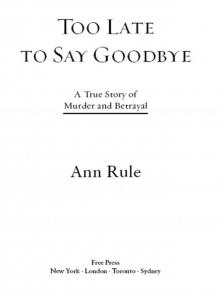 Too Late to Say Goodbye: A True Story of Murder and Betrayal
Too Late to Say Goodbye: A True Story of Murder and Betrayal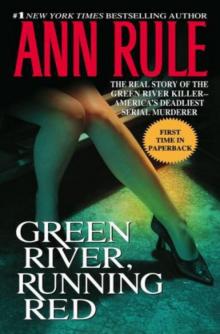 Green River, Running Red
Green River, Running Red Bitter Harvest
Bitter Harvest Dead by Sunset: Perfect Husband, Perfect Killer?
Dead by Sunset: Perfect Husband, Perfect Killer?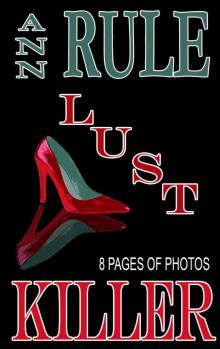 Lust Killer
Lust Killer And Never Let Her Go: Thomas Capano: The Deadly Seducer
And Never Let Her Go: Thomas Capano: The Deadly Seducer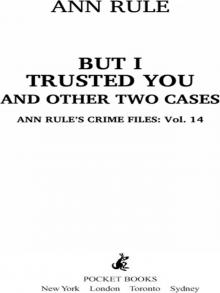 But I Trusted You and Other True Cases
But I Trusted You and Other True Cases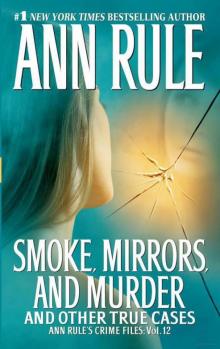 Smoke, Mirrors, and Murder and Other True Cases
Smoke, Mirrors, and Murder and Other True Cases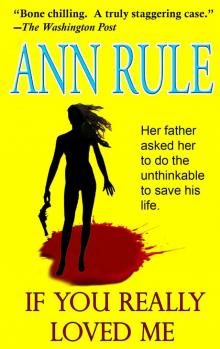 If You Really Loved Me
If You Really Loved Me Kiss Me, Kill Me and Other True Cases
Kiss Me, Kill Me and Other True Cases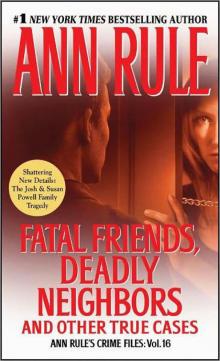 Fatal Friends, Deadly Neighbors and Other True Cases
Fatal Friends, Deadly Neighbors and Other True Cases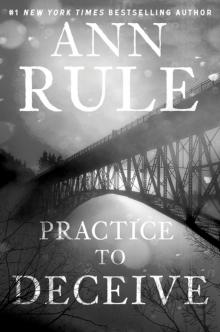 Practice to Deceive
Practice to Deceive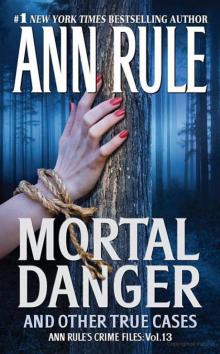 Mortal Danger and Other True Cases
Mortal Danger and Other True Cases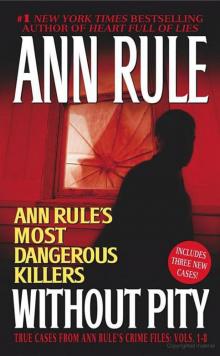 Without Pity: Ann Rule's Most Dangerous Killers
Without Pity: Ann Rule's Most Dangerous Killers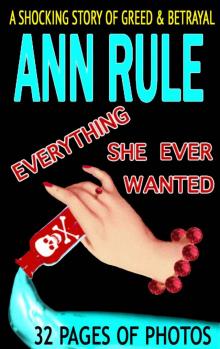 Everything She Ever Wanted
Everything She Ever Wanted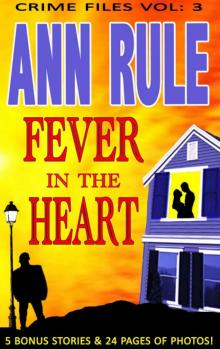 A Fever in the Heart and Other True Cases
A Fever in the Heart and Other True Cases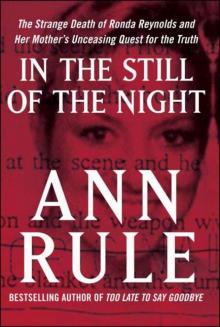 In the Still of the Night
In the Still of the Night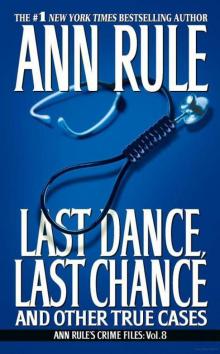 LAST DANCE, LAST CHANCE - and Other True Cases
LAST DANCE, LAST CHANCE - and Other True Cases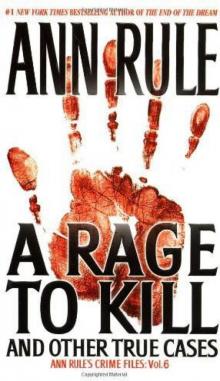 A Rage to Kill
A Rage to Kill The I-5 Killer
The I-5 Killer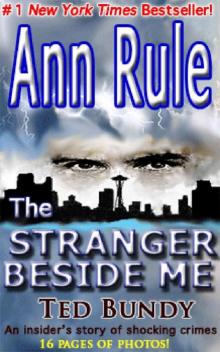 The Stranger Beside Me
The Stranger Beside Me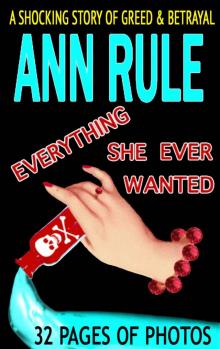 Everything She Ever Wanted: A True Story of Obsessive Love, Murder, and Betrayal
Everything She Ever Wanted: A True Story of Obsessive Love, Murder, and Betrayal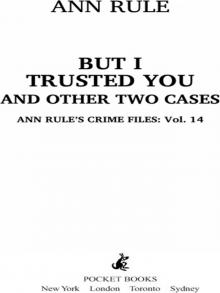 But I Trusted You
But I Trusted You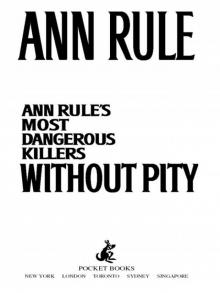 Without Pity
Without Pity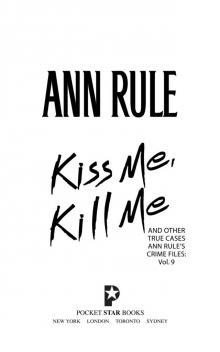 Kiss Me, Kill Me
Kiss Me, Kill Me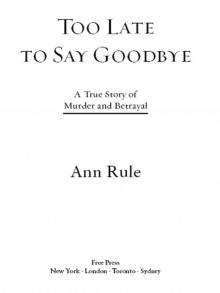 Too Late to Say Goodbye
Too Late to Say Goodbye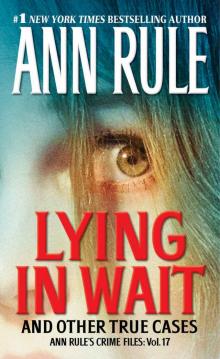 Lying in Wait
Lying in Wait Fatal Friends, Deadly Neighbors
Fatal Friends, Deadly Neighbors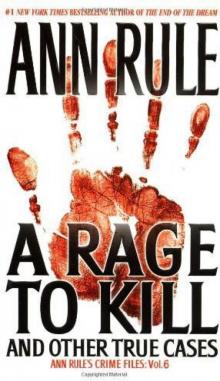 A Rage to Kill: And Other True Cases
A Rage to Kill: And Other True Cases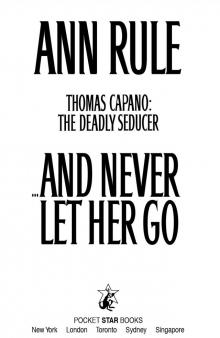 And Never Let Her Go
And Never Let Her Go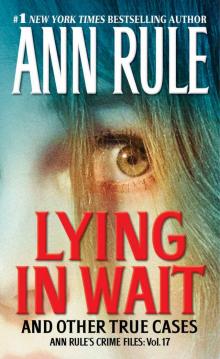 Lying in Wait Ann Rule's Crime Files Vol.17
Lying in Wait Ann Rule's Crime Files Vol.17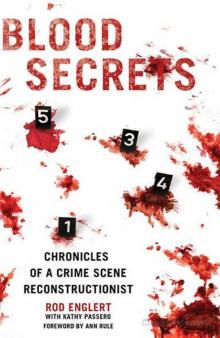 Blood Secrets: Chronicles of a Crime Scene Reconstructionist
Blood Secrets: Chronicles of a Crime Scene Reconstructionist No Regrets
No Regrets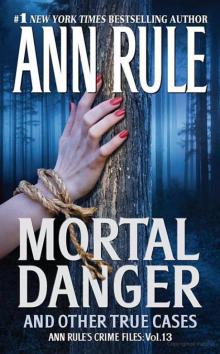 Mortal Danger
Mortal Danger But I Trusted You: Ann Rule's Crime Files #14
But I Trusted You: Ann Rule's Crime Files #14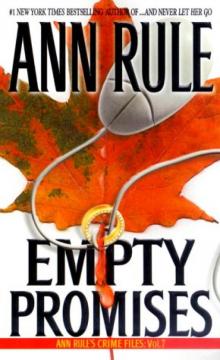 Empty Promises
Empty Promises Dead by Sunset
Dead by Sunset Last Dance, Last Chance
Last Dance, Last Chance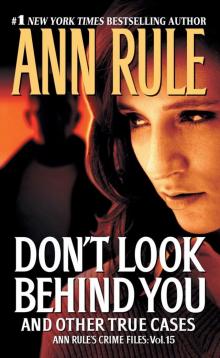 Don't Look Behind You
Don't Look Behind You